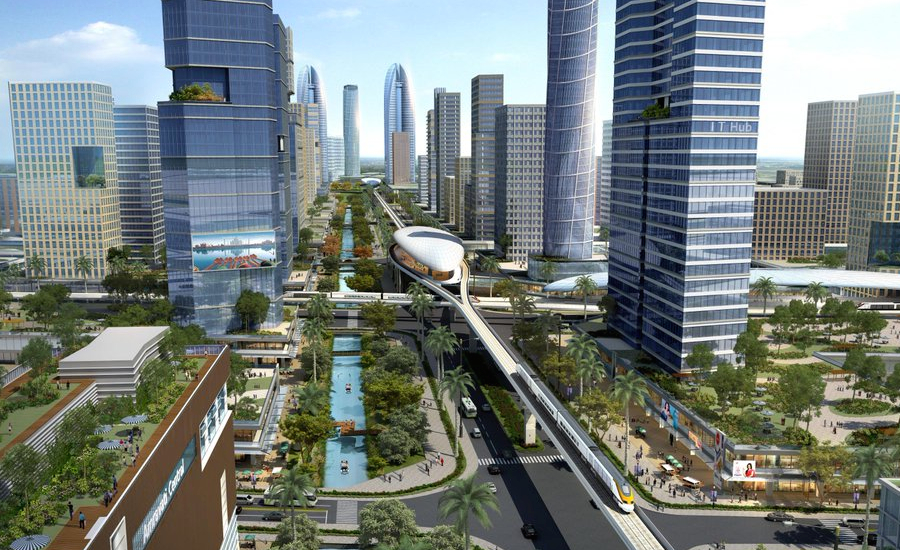India is starting construction of a new greenfield state capital, Amaravati, in the newly formed state of Andhra Pradesh in South India. City planners aim to build it out with an eye toward smart infrastructure and sustainable living.
“Amravati will lead the nation in urban development,” said Prime Minister Narendra Modi at the foundation-laying ceremony on October 22, giving his vision of 100 smart cities, a major urban initiative in India.
The result of a bifurcated state last December, the new capital city needs to be constructed by 2024, until which the two new states will share a common capital, Hyderabad.
Singapore’s Surbana International Consultants and JURONG International have been acting as master planners for the capital and surrounding region after the governments of Singapore and Indian state of Andhra Pradesh signed a memorandum of understanding to collaborate on design of the new capital.
“Drawing from the Singapore-inspired planning model, we will ensure the Singapore brand remains as an international showcase for master planning,” says Surbana in a statement. “This landmark project will inaugurate the first large-scale international collaboration between the two homegrown companies. Surbana and JURONG International will see their combined expertise in urbanization and industrial development solutions respectively,” it adds.The plan covers Amaravati’s development in three phases through 2050.
The initial plan, which was performed gratis, allocates 21% of the total area for a green network and encourages use of public transportation.The Capital Region Development Authority (CRDA) is conducting a global bidding process for procurement of consultancy services for preparation of the concept master plan and revised detailed master plan for 1579.64 sq kilometers.
The consultant will undertake detailed design and tender preparation for Phase-I area for Amaravati, according to the request for proposal. The first bids for the city—expected to pertain to road infrastructure—are to be released around July 2016, ENR has learned.
“The government is approaching this project as a corporate entity,” says Ashish Tandon, managing director of Egis India Consulting Engineers. “The speed with which the project is being undertaken is a result of a push made by a dynamic Chief Minister Chandrababu Naidu, who has cut down bureaucratic red tape through introduction of a single window clearance. A major advantage is that 85% of the land has been made available.”
With over 7,000 sq km of land use for the new capital region, the urbanization is projected to impact a population of 49.4 million.“Urban development should be taken up as an opportunity, not as a challenge,” Modi says.
However, many challenges stand in the path of development. Financing is one, but Naidu recently launched the “My Brick—My Amaravati” scheme, where people across the globe can donate money for building Amravati by buying e-bricks. The e-bricks are priced at 10 rupees each and received a strong response on the first day.
The workforce is another hurdle, despite overtures from Singapore and Japan, which sources say have committed to setting up manufacturing bases in the region.
“Though qualifications are generic, India has not developed capability for specialized jobs in construction,” said one engineer.
A consultant also says that lessons need to be learned from India’s first private greenfield city, Lavasa, built by Hindustan Construction Co. Ltd.
“The challenge is how to scale development. … Investment has to be planned in a phased manner,” the consultant says. Lavasa has been planned for full development through 25 years. An investment of approximately $10 billion will be required in the next five years. He asked, "Where is the money coming from?”


Post a comment to this article
Report Abusive Comment